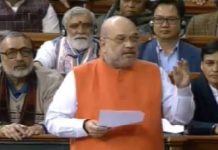 The Reserve Bank of India’s internal working group has proposed to allow large corporate and industrial houses to promote private banks which would open doors for the corporate sector to set up banks in near future.
The Reserve Bank of India’s internal working group has proposed to allow large corporate and industrial houses to promote private banks which would open doors for the corporate sector to set up banks in near future.
Chief General Manager, RBI, Yogesh Dayal, confirmed that a report released by the Internal Working Group of RBI on November 20,2020, makes a case for considering well-run, large non-banking finance companies (NBFCs), with an asset size of 50,000 crore or above, for conversion into banks, subject to completion of 10 years of operations.
The RBI IWG report opens doors for many private sector companies to set up banks as some of these already have large non-banking finance companies running for more than 10 years and most of these NBFCs are bigger than many mid-sized banks. It is worth mentioning that with the RBI having earlier allowed the private sector to set up payments banks for the first time, Reliance Industries, Aditya Birla Nuvo, Tech Mahindra, Tata Sons, Sun Pharma, all had applied for a licence. Some got the licence, whereas some withdrew from the race as a second thought on the viability of the payments banking model. But now the RBI seems to be in a mood to allow large corporate houses to set up full-scale banks.
RBI Report
The Reserve Bank of India had constituted an Internal Working Group (IWG) on June 12, 2020 to review extant ownership guidelines and corporate structure for Indian private sector banks. The Terms of Reference of the IWG inter alia included review of the eligibility criteria for individuals/entities to apply for banking license; examination of preferred corporate structure for banks and harmonisation of norms in this regard; and, review of norms for long-term shareholding in banks by the promoters and other shareholders.
The IWG has since submitted its report. The key recommendations of the IWG are as follows:
- The cap on promoters’ stake in the long run (15 years) may be raised from the current level of 15 per cent to 26 per cent of the paid-up voting equity share capital of the bank.
- As regards non-promoter shareholding, a uniform cap of 15 per cent of the paid-up voting equity share capital of the bank may be prescribed for all types of shareholders.
- Large corporate/industrial houses may be allowed as promoters of banks only after necessary amendments to the Banking Regulation Act, 1949 (to prevent connected lending and exposures between the banks and other financial and non-financial group entities); and strengthening of the supervisory mechanism for large conglomerates, including consolidated supervision.
- Well run large Non-banking Financial Companies (NBFCs), with an asset size of 50,000 crore and above, including those which are owned by a corporate house, may be considered for conversion into banks subject to completion of 10 years of operations and meeting due diligence criteria and compliance with additional conditions specified in this regard.
- For Payments Banks intending to convert to a Small Finance Bank, track record of 3 years of experience as Payments Bank may be considered as sufficient.
- Small Finance Banks and Payments Banks may be listed within ‘six years from the date of reaching net worth equivalent to prevalent entry capital requirement prescribed for universal banks’ or ‘10 years from the date of commencement of operations’, whichever is earlier.
- The minimum initial capital requirement for licensing new banks should be enhanced from 500 crore to 1000 crore for universal banks, and from 200 crore to 300 crore for small finance banks.
- Non-operative Financial Holding Company (NOFHC) should continue to be the preferred structure for all new licenses to be issued for universal banks. However, it should be mandatory only in cases where the individual promoters / promoting entities/ converting entities have other group entities.
- While banks licensed before 2013 may move to an NOFHC structure at their discretion, once the NOFHC structure attains a tax-neutral status, all banks licensed before 2013 shall move to the NOFHC structure within 5 years from announcement of tax-neutrality.
- Till the NOFHC structure is made feasible and operational, the concerns with regard to banks undertaking different activities through subsidiaries/ Joint Ventures/ associates need to be addressed through suitable regulations.
- Banks currently under NOFHC structure may be allowed to exit from such a structure if they do not have other group entities in their fold.
- The Reserve Bank may take steps to ensure harmonization and uniformity in different licensing guidelines, to the extent possible. Whenever new licensing guidelines are issued, if new rules are more relaxed, benefits should be given to existing banks, and if new rules are tougher, legacy banks should also conform to new tighter regulations, but a non-disruptive transition path may be provided to affected banks.
The report also makes a case for considering well-run, large non-banking finance companies (NBFCs), with an asset size of 50,000 crore or above, for conversion into banks, subject to completion of 10 years of operations. Earlier, during issuance of licences, preference was given to financial institutions which had experience in banking transactions.
Since liberalisation, bank licences have been given in three rounds. Ten banks got it in 1993-94, two in 2003-04, and an additional two in 2014. The recommended changes — which seek to bring clarity on capital norms and ownership guidelines — can take place only after amendments to the Banking Regulation Act, 1949. The RBI has sought comments on the draft report by January 15.
The banking landscape in the country is clearly set for a big change. Permission to large industrial houses to convert their NBFCs to full-scale banks will make them bigger than many mid-sized banks. The move could address the risk posed by large non-bank lenders whose growth goes unchecked, as experienced in the IL&FS and DHFL debacle. A fresh wave of consolidation in the banking sector could also be on the cards. The suggestion that payments banks can convert into small finance banks after three years of operations can potentially benefit PayTm, Jio and Airtel.
Do the recommendations augur well for the customer? Time will tell. Given the rise in bank failures and the trust deficit when it comes to lenders dealing with defaulting big guns, the regulator will have to be more than careful in distributing bank licences. The significant shift in the ownership structure of private sector banks would invite concerns of taking the sector into the brazen territory of crony capitalism, and that can only be addressed through stricter regulatory monitoring and by strengthening the supervisory mechanism.
In the past, the last two licences were given seven years ago to IDFC First Bank and Bandhan Bank with a specific objective of achieving financial inclusion. Before these, RBI gave two licences to Kotak Mahindra Bank and YES Bank. The objective was to serve the underserved and unbanked population. The public sector banks have already consolidated with 6-7 large banks with balance sheet size of over Rs 10 lakh crore. The new advisory issued by the RBI is poised to change the banking landscape in near future and make private sector players play a major role in banking by setting up banks.
letters@tehelka.com












